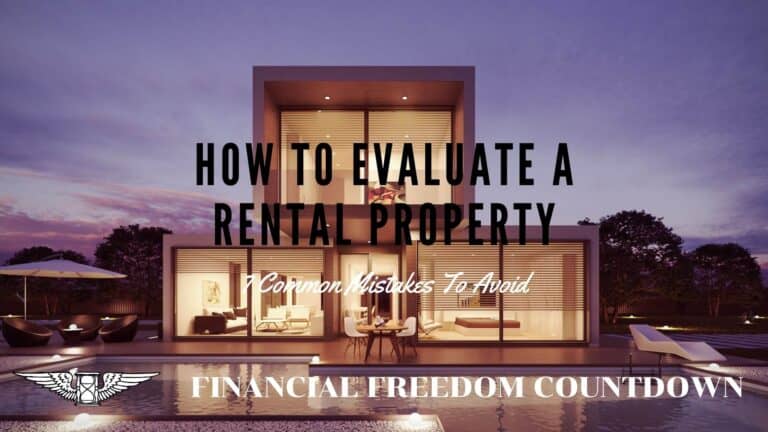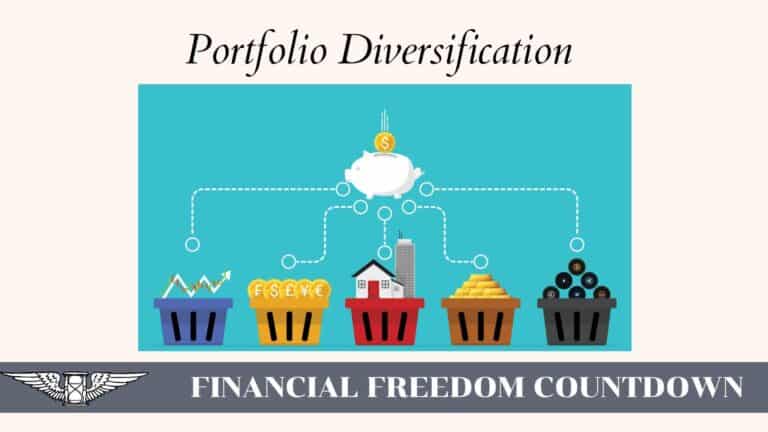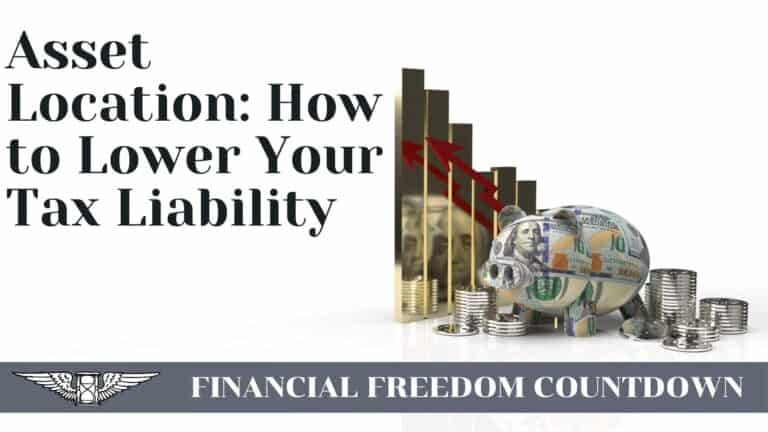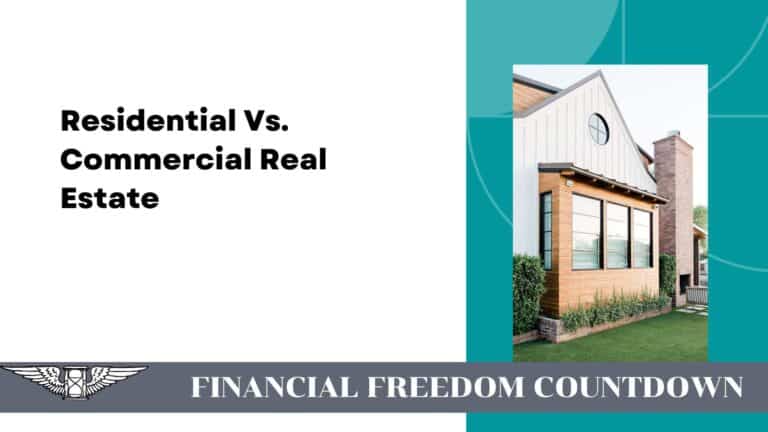Value Add Real Estate: How To Improve Your Real Estate Investment (With Examples)
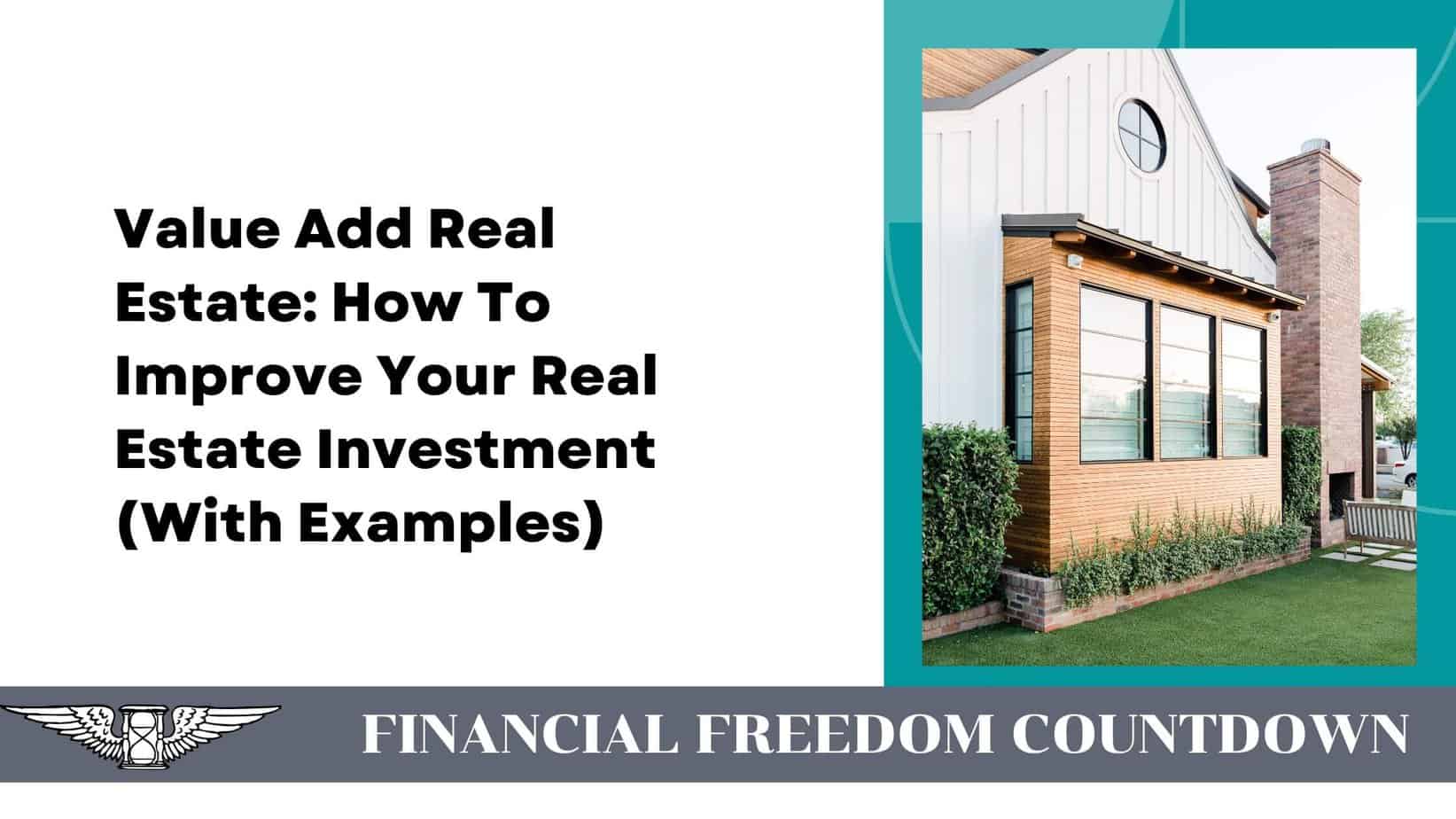
Are you looking for a solid investment?
Real estate is always a tremendous income-producing asset, but finding the right property with the perfect blend of price, cash flow, and appreciation can be difficult. That is where value-add real estate comes into play.
Before successful real estate investors buy a value-add property, they ask themselves, does this investment opportunity give me the best balance of risk and reward that correlates with my investment strategy? They don’t focus on potential appreciation, asking price, or how much money they might make.
There are various commercial real estate investment strategies that investors use, and each one of these strategies offers a balance between risk and reward. A real estate investor must first know which approach to use and does it fit their financial goals. One strategy might be great for one investor and not correct for another.
The Four Main Real Estate Investment Strategies
Multifamily investors can choose from four primary investment strategies that each offer different risk and reward balances. Even the safest type of rental property investment will still provide as much as four times higher return than a U.S. Treasury bond.
Core Real Estate Investment Strategy
Many investors view the core real estate investment strategy as similar to investing in U.S. Treasuries or I-Bonds, which also means safe. These real estate properties are known as class A properties. Class A properties are almost brand new or fully updated in the best five-star neighborhoods with minimal risk.
Vacancies are expected to be lower and rents higher. Because of this, Class A properties cost more to purchase. Because core properties have lower investment risk, the price per square foot is often higher. Core investment strategy properties generate a lower cap rate in exchange for a lower risk of problems with the property and the tenants.
Core-Plus Strategy
Core-plus properties are similar to core strategy properties, located in desirable locations, but could need minor capital improvements or exterior and interior upgrades. These properties represent a slightly higher risk than the core strategy and might not be fully occupied.
Opportunistic Real Estate Investors Strategy
Investors compare this strategy to investing in high-yield bonds, which are riskier than investing in U.S. Treasury bonds or a similar asset class.
An example of an opportunistic investment strategy would be an investor that buys opportunistic properties that need significant rehabilitation to fix and flip, also known as flippers.
These investors invest a lot of effort, time, and money to buy these properties at a low price and then sell them for a high price for a quick profit.
The problem with this investment strategy is the commercial real estate market can be fickle and is not 100% predictable. Commercial real estate markets move up and down, sometimes at surprising speed. The investor that uses this strategy is trying to time the market.
In 2008, many investors using this strategy were stuck trying to sell homes when the market was dropping dramatically. They were left holding properties that couldn’t sell.
Not only do opportunistic investors have to time the market, but they also have to pick the right location to buy property. Different cities or even different neighborhoods can perform differently.
The Value Add Real Estate Strategy
The definition of value-add real estate is to find ways to generate more cash flow or yields by discovering untapped revenue potential or creating value through property upgrades.
Value-add real estate is in the middle of the other investment strategies and right in the sweet spot on the risk and reward spectrum. But it is riskier than the core real estate investing strategy and less risky than the opportunistic investment strategy.
The value-add real estate strategy is the best option for rental property investors that want to buy Class B and Class C single-family homes and sometimes smaller multifamily properties.
Investors strive to buy the right value-add property in the right market to produce higher returns with a manageable level of risk. Investors can generate profits with value-add property in the following ways:
- The market value of the properties is maximized by investing in rental properties that promise the highest level of return in proportion to the total amount of capital invested. The total amount of money also includes the purchase price and upgrade costs.
- Total returns and the yield can be increased by creating additional revenue streams or increasing existing income, which one can accomplish in several ways.
The difference between core-plus properties and value-add properties is that one can purchase value-add properties at a reasonable price and, with some work, can be brought up to higher market standards.
How Value Add Real Estate Strategy Works
The demand for rental homes in the United States has never been higher. That is exactly what a rental property investor wants to hear. Along with the demand comes the problem of a limited number of available single-family homes and apartment buildings for investment.
Intelligent investors turn this problem into a money-making opportunity, which is why value-add projects are so popular today.
1) Some value-add investors create additional income streams and hold their rental properties for a long time while earning money on rent.
2) Other value-add investors rebalance their existing rental home portfolio by selling a few homes as turnkey rental property to another multifamily real estate investor at a higher sale price than they bought the property.
One of the best things about investing in value-add real estate is there are so many different levels of opportunity to increase the income realized from value-add investments when you use the value-add investment strategy.
Create Additional Income Streams
Tenants will pay a little extra for things that will make their lives easier. Some examples of value add real estate are
If your single-family house tenant is a hoarder who pays for a storage unit offsite, you could install a shed in the backyard and charge extra for the shed. The tenant pays less than the storage unit and can access her stuff more easily. You get an increased cash flow every month. You also gain experience in investing in self-storage units in the future. It is a win-win situation.
Or you might own a multifamily investment and decide to install a vending machine on site. The tenants don’t need to drive to the store for a quick snack; you get additional income from your real estate portfolio.
Increasing rents by making improvements is the best way to generate additional passive income from real estate. The value-added real estate strategy is also common in real estate crowdfunding. To change the property’s cap rate, syndicators will often buy an apartment building and make improvements to only some units charging a higher rent.
Painting the exterior and interior of the property between tenants is one improvement. Other improvements can include installing energy-efficient appliances and updating the fixtures, flooring, countertops, or stainless steel appliances. Many new tenants will pay additional rent for these extras.
Rehab of units between tenant turnover reduces the real estate investment risks and lumpy expenses for the investors. You can provide options for exiting tenants to upgrade their lifestyle and attract a higher clientele over time.
If investing in commercial real estate, provide covered parking or additional off-street reserved parking spaces for a premium. Businesses will appreciate the convivence for the customers.
Analyze Existing Revenues and Expenses
Value-add investment strategy investors should always look for hidden opportunities for adding value. Often, a profit and loss statement shows revenues and expenses in only a few categories. Doing it this way can hide ways to add value.
All investors should dig deep into the profit and loss statements line by line to find operational expenses that can be reduced to increase net operating income and to find creative ways to generate more cash flow.
For example, you might notice high utility expenses since the rental units do not have their individual utility meters. Rental property owners can implement Ratio Utility Billing System (RUBS) to eliminate the utility expense from their balance sheet and promote conservation.
Localize Your Team
Long distance investing is great for stabilized properties but value-add real estate investors should have a local team they trust in each market they invest in.
Delegating a trusted local team is a more effortless and cost-effective way to manage the properties and increase income. That leaves more time for investors to find the next best investment opportunity.
Example of Value Add Real Estate
Consider a 100 unit apartment building acquired for $100,000 per unit.
Based on 1% rule of thumb metric for evaluating rental property, each unit is currently rented for $1,000.
Cap rate = NOI / Market value
The owner does value add improvements for 1o units a year based on regular tenant turnover and increases the rehabbed unit rent to $1,300. In 5 years, half of the apartments are now at the premium rate.
The owner can sell the property to a real estate syndication with a better market value since now the NOI is improved substantially. Also half the units are still below market rate so the new operator has “meat on the bones” to further extract more value from the deal. The new operator can even use the successful strategies of the previous owner when raising capital for their real estate project.
The Benefits of Value Add Property Investing
The main benefit of value-add real investing is the return on investment (ROI) boost compared to the core and core-plus investing strategies. Intelligent investors can locate excellent properties to invest in.
Once purchased, the savvy investor can invest some money and work and sell the real estate property as a turnkey rental property or hold on to it for passive cash flow and potential appreciation.
Value-add investing is not only for individuals meeting the accredited investor qualifications but also for non-accredited investors. One advantage of getting involved with an add real estate investing group is that everyone can pool their professional knowledge and experience in the business.
The Risks of Value Add Real Estate Investing
Value-add investing can be made riskier depending on the amount of debt or leverage the investor plans to use. Usually, value-add investors use more leverage than traditional real estate investments and rely on development projects to increase returns.
But this doesn’t have to be the case. Value-add investments can also be less risky for those with lower risk tolerance. Increasing return on investment can be accomplished using less debt by making simple enhancements to the property and charging tenants a little more.
Since there are added risks with construction, adding more leverage to construction projects could move value-add investments closer to opportunistic investing on the risk and reward spectrum.
Tax Advantages of Value Add Real Estate Investments
Investing in real estate, including value-add real estate, offers numerous tax advantages compared to other investments like stocks, bonds, and mutual funds. Investors can claim several deductions on their property’s depreciation schedule.
The Internal Revenue Service has set the depreciation schedule at 27.5 years. Value-add investors can deduct 1/27.5 from their yearly taxes on the depreciation schedule. One of the tax advantages of real estate investing is accelerated depreciation and bonus depreciation. Investors can also deduct the costs of maintenance, daily repairs, utilities, and other costs of maintaining and running the property.
Summary of Value Add Real Estate Investing
The Value-add strategy is a popular real estate investment strategy. Although there are differences between residential vs. commercial real estate, value-added real estate follows the same basic principles. Potential investors can purchase property, including single-family homes and multifamily real estate. Choosing the best investment property will depend on which strategy you choose and the investor’s investment objectives.
A value-added property usually is Class B and Class C single-family homes and sometimes smaller multifamily real estate in the residential space. Investors should look for properties with deferred maintenance or neglect that have been poorly managed. With a few upgrades to these core properties, investors can unlock a property’s untapped potential. Investors can charge higher market rents, attract higher quality tenants, and increase their income and the property’s net operating income (NOI).
Upgrading a property doesn’t have to include significant construction projects. Upgrades can be painting, updating light fixtures, new flooring, and adding energy-efficient appliances. Investors can also increase rents by offering covered and reserved parking spaces, additional storage, and fast internet service.
On the risk spectrum of the four leading real estate investing strategies, add-value investing has more risk than core or core plus strategies but is not as risky as opportunistic investments. But the value-add investment strategy should not be considered high risk unless too much leverage or debt is used.
Adding one or more value-add properties to a real estate investment portfolio will diversify the portfolio. As with all investment opportunities, past performance of real estate investing does not always predict future results.
When you develop a business plan to buy value-add property, consider all the possible risks and opportunities before making investment decisions.

John Dealbreuin came from a third world country to the US with only $1,000 not knowing anyone; guided by an immigrant dream. In 12 years, he achieved his retirement number.
He started Financial Freedom Countdown to help everyone think differently about their financial challenges and live their best lives. John resides in the San Francisco Bay Area enjoying nature trails and weight training.
Here are his recommended tools
Personal Capital: This is a free tool John uses to track his net worth on a regular basis and as a retirement planner. It also alerts him wrt hidden fees and has a budget tracker included.
Platforms like Yieldstreet provide investment options in art, legal, real estate, structured notes, venture capital, etc. They also have fixed-income portfolios spread across multiple asset classes with a single investment with low minimums of $10,000.
